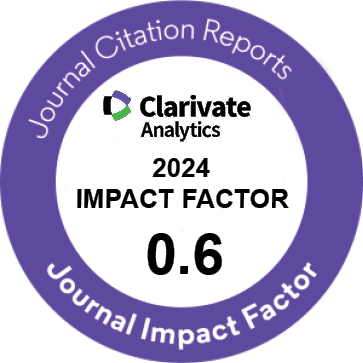| Editorial | |
| HPV Vaccine: Public Health, Politics, and Personal Choice | |
| Sandra K. Cesario | |
| Texas Woman's University, College of Nursing, Houston, TX, USA | |
|
IJWHR 2015; 3: 123-125 DOI: 10.15296/ijwhr.2015.26 Viewed : 5042 times Downloaded : 3472 times. Keywords : HPV, Cervical Cancer, Policy |
|
| Full Text(PDF) | Related Articles | |
| Introduction | |
Human papillomavirus (HPV) is known to be associated with many types of cancers disproportionately affecting women. The most common of these is cervical cancer. However anal, vulvar, vaginal, penile, and oropharyngeal cancers have also been linked to this virus. It is estimated that 527 624 women receive a cervical cancer diagnosis annually and 265 653 die from the disease making it the third most common cancer among women globally (1). Anal cancer, while not as prevalent as cervical cancer, is on the rise with approximately 27 000 new cases identified worldwide each year. Women are at higher risk than men for anal cancer, especially those with cervical or vulvar cancers and those who are immunocompromised. Other conditions such as recurrent juvenile respiratory papillomatosis and genital warts are often attributed to HPV types 6 and 11.
HPV and Cancer Etiology Worldwide Papanicolaou (Pap) testing has facilitated earlier detection and treatment of cellular changes related to this oncogenic virus. In addition, HPV DNA self-testing kits are now available to women as a feasible alternative to Pap testing to increase screening for cervical cancer in populations that may lack access to a health care provider or those who may avoid screening this due to embarrassment, discomfort, and anxiety. Because of the slow rate in which cervical cancer develops, it is a disease for which population screening is effective in identifying changes during the preinvasive phase when intervention can lead to a cure. However, approximately half of women diagnosed with HPV-related cancers continue to die.
HPV Vaccine In December 2014, the FDA announced the approval of Gardasil9® (Human Papillomavirus 9-valent Vaccine, Recombinant). The new vaccine will cover 9 HPV types, 5 more HPV types than the previously marketed Gardasil. In addition to the four HPV types listed above, coverage will now include HPV types 31, 33, 45, 52 and 58 which will now have the potential to protect women against approximately 90% of cervical, vulvar, vaginal, anal and oropharyngeal cancers. Gardasil9® was approved for use in females ages 9-26 and males ages 9-15 administered in 3 doses over 6 months. However, a 2-dose recommendation is being considered (3).
Underutilization of the Vaccine
Reasons for Underutilization Politics has played a role in universal vaccination of all children against HPV. Health policies of a country and its political leaders have an impact on the introduction of a new pharmaceutical agent to a given population. The accessibility, manufacture, licensing, and distribution are facilitated or impeded policy adoption. Ideological features of the political environments and special interest groups may oppose or support policy proposals and alternatives. Concerns about safety and efficacy of HPV vaccines as well as the perception that pharmaceutical companies may be unduly influencing health care policy have key issues raised during policy debates. Originally, upon introduction of the vaccines in 2006, religious and conservative factions felt that its use would sanction teen sex and encourage promiscuity, but recent research refutes this claim. Parents who have been polled regarding their support for the vaccine and/or their intent to vaccinate their own children have provided some insight into barriers that still need to be addressed. The most common response indicated that the health care did not recommend the vaccine (5). This suggests that education of health care providers is needed about the latest recommendations. Likewise, a lack of information on the part of the parent and the adolescent about the HPV is also a problem (6). As awareness is raised within the community regarding the value of vaccination, the health care consumer will be better informed and may be more proactive in requesting the vaccine from the provider. Compounding the problem, there is a lack of recognition of HPV as a sexually transmitted infection (STI) in the general population. Surveyed parents also believed that the HPV vaccine needed to be included in the national vaccine schedule and a reduction of cost would increase vaccination frequency. Sexual health dialogue between adolescents, their parents, and health care providers prior to first sexual encounter is an important aspect of care and often overlooked.
Summary and Conclusions
Ethical Issues
Conflict of Interests
References 2. Rosales R, Rosales C. Immune therapy for human papillomaviruses-related cancers. World J Clin Oncol. 2014;5(5):1002-19. doi:10.5306/wjco.v5.i5.1002. 3. Food and Drug Administration (FDA). FDA News Release: FDA approves Gardasil 9 for prevention of certain cancers caused by five additional types of HPV, December 10, 2014. http://www.fda.gov/NewsEvents/ Newsroom/PressAnnouncements/ucm426485.htm. Accessed January 24, 2015. Published 2014. 4. Moss J, Reiter P, Brewer N. Correlates of human papillomavirus vaccine coverage: a state-level analysis. Sex Transm Dis. 2015;42(2):71-75. doi:10.1097/ OLQ.0000000000000225. 5. Donahue K, Stupiansky N, Alexander A, Zimet G. Acceptability of the human papillomavirus vaccine and reasons for non-vaccination among parents of adolescent sons. Vaccine. 2014;32(31):3883-3885. doi: 10.1016/j.vaccine.2014.05.035. 6. Firenze A, Marsala M, Bonanno V, et al. Facilitators and barriers HPV unvaccinated girls after 5 years of program implementation. Hum Vaccin Immunother. 2014;11(1):240-244. doi: 10.4161/hv.36158. 7. Fonseca A, de Lima Ferreira L. Systematic review of the cost-effectiveness of the vaccination against HPV in Brazil. Hum Vaccin Immunother. 2014;10(12):3484- 3490. doi: 10.4161/hv.34410. |
Top Introduction |
Cite By, Google Scholar
Google Scholar
PubMed
Online Submission System
 IJWHR ENDNOTE ® Style
IJWHR ENDNOTE ® Style
 Tutorials
Tutorials
 Publication Charge
Women's Reproductive Health Research Center
About Journal
Publication Charge
Women's Reproductive Health Research Center
About Journal
Aras Part Medical International Press Editor-in-Chief
Arash Khaki
Mertihan Kurdoglu Deputy Editor
Zafer Akan























